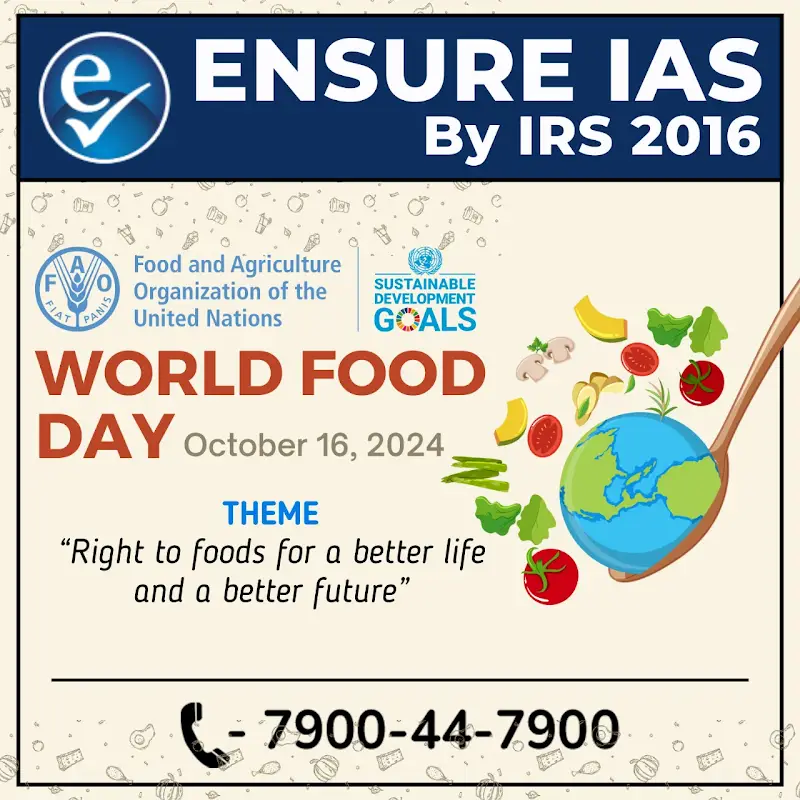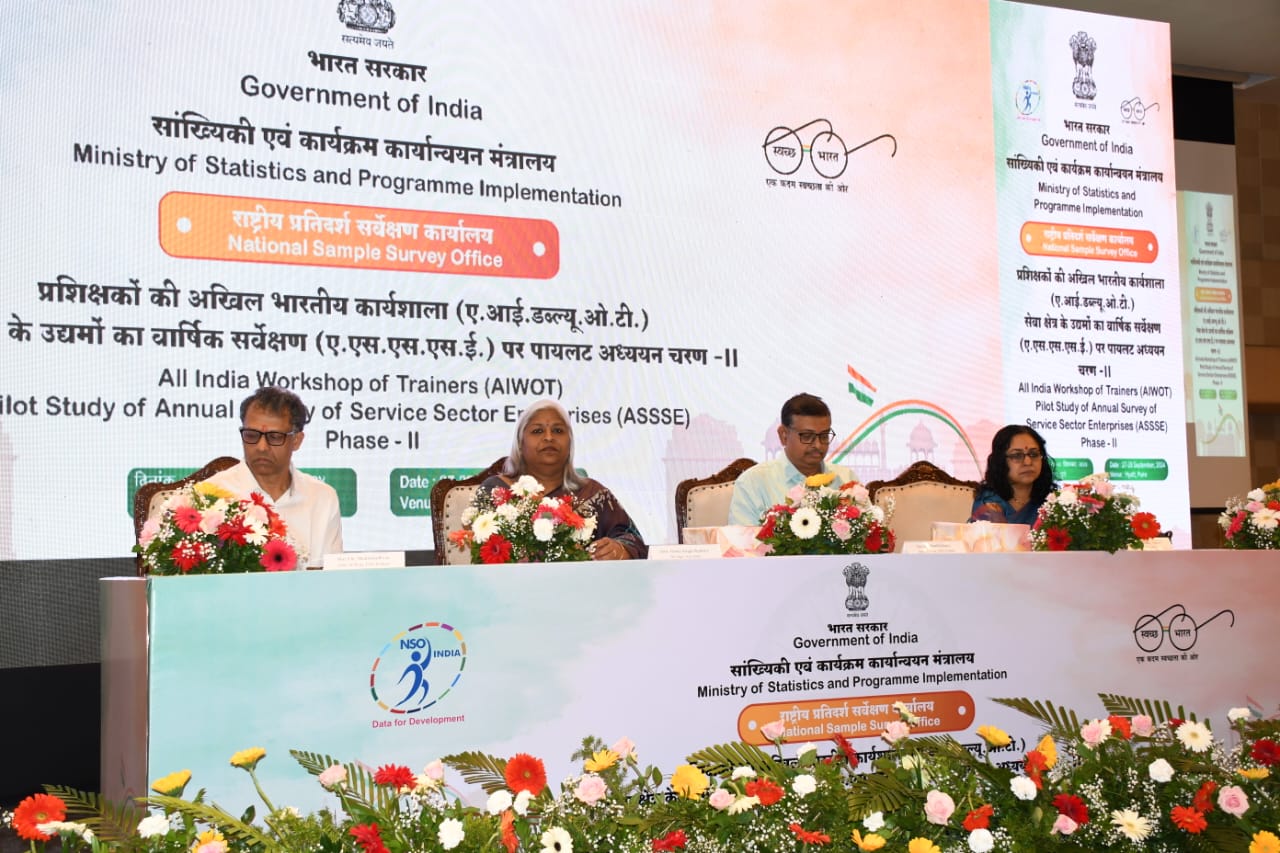- Courses
- GS Full Course 1 Year
- GS Full Course 2 Year
- GS Full Course 3 Year
- GS Full Course Till Selection
- CSAT
- 5 LAYERED ARJUNA Mentorship
- Public Administration Optional
- Online Program
- GS Recorded Course
- NCERT (Recorded 500+ Hours)
- Polity Recorded Course
- Geography Recorded Course
- Economy Recorded Course
- AMAC Recorded Course
- Modern India, Post Independence & World History
- Environment Recoded Course
- Governance Recoded Course
- Science & Tech. Recoded Course
- International Relations and Internal Security Recorded Course
- Disaster Management Module Course
- Ethics Recoded Course
- Essay Recoded Course
- Current Affairs Recoded Course
- ABOUT US
- OUR TOPPERS
- TEST SERIES
- FREE STUDY MATERIAL
- VIDEOS
- CONTACT US
World Food Day 2024: Theme, Significance And Strategies
World Food Day 2024: Theme, Significance And Strategies
16-10-2024
World Food Day is celebrated every year on October 16th to raise awareness about hunger and malnutrition around the world. The day commemorates the founding of the Food and Agriculture Organization (FAO) of the United Nations in 1945. The first World Food Day was held on 16 Oct 1981.

Objectives of World Food Day
World Food Day has several key objectives:
- Encourage attention to agricultural food production and to stimulate national, bilateral, multilateral and non-governmental efforts to this end;
- Encourage economic and technical cooperation among developing countries;
- Encourage the participation of rural people, particularly women and the least privileged categories, in decisions and activities influencing their living conditions;
- Raise awareness about global hunger.
- Promote the transfer of technologies to the developing world; and
- Strengthen international and national efforts to combat hunger, malnutrition, and poverty and draw attention to achievements in food and agricultural development.
World Food Day 2024 Theme
- Right to foods for a better life and a better future - is the World Food Day theme for 2024. This theme highlights the importance of diverse, nutritious, affordable, and safe food for everyone.
- ‘Foods’ stands for diversity, nutrition, affordability, and safety. A greater diversity of nutritious foods should be available in our fields, in our markets, and on our tables, for the benefit of all.
The Challenge of Hunger
- The world's farmers produce enough food to feed more than the global population yet, hunger persists. Around 733 million people are facing hunger in the world due to repeated weather shocks, conflicts, economic downturns, inequality, and the pandemic.
- This impacts the poor and vulnerable most severely, many of whom are agricultural households, reflecting widening inequalities across and within countries.
The Right to food
- Food is the third most basic human need after air and water – everyone should have the right to adequate food. Human rights such as the right to food, life and liberty, work and education are recognised by the Universal Declaration of Human Rights (UDHR) and two legally binding international covenants.
- Over 2.8 billion people in the world are unable to afford a healthy diet. Unhealthy diets are the leading cause of all forms of malnutrition – undernutrition, micronutrient deficiencies and obesity, which now exist in most countries, cutting across socio-economic classes.
- Yet today, too many people suffer from hunger and are unable to afford healthy diets. More vulnerable people are often forced to rely on staple foods or less expensive foods that can be unhealthy, while others suffer from the unavailability of fresh or varied foods, lack the information they need to choose a healthy diet, or simply opt for convenience.
Factors Exacerbating Hunger and Malnutrition
- Hunger and malnutrition are further exacerbated by protracted or prolonged crises that are driven by a combination of conflict, extreme weather events and economic shocks.
- These crises also disrupt agricultural systems, which are vulnerable to climate change and other environmental challenges.
The Role of Agrifood Systems
Agrifood systems, as a whole, are vulnerable to disasters and crises, particularly the impacts of climate change but at the same time, they are generating pollution, degrading soil, water and air, and contributing to greenhouse gas emissions, and biodiversity loss. By transforming agrifood systems, there is great potential to mitigate climate change and support peaceful, resilient and inclusive livelihoods for all.
Must Check: Best IAS Coaching In Delhi
UPSC Prelims Result 2024 Out: Expected Cut Off & Other Details, UPSC Prelims 2024 Answer with Explanation, Daily Prelims Quiz, Daily Current Affairs, MONTHLY CURRENT AFFAIRS TOTAL (CAT) MAGAZINE, Best IAS Coaching Institute in Karol Bagh, Best IAS Coaching Institute in Delhi, Daily Mains Question Answer Practice, ENSURE IAS UPSC Toppers, UPSC Toppers Marksheet, Previous Year Interview Questions, UPSC Syllabus




